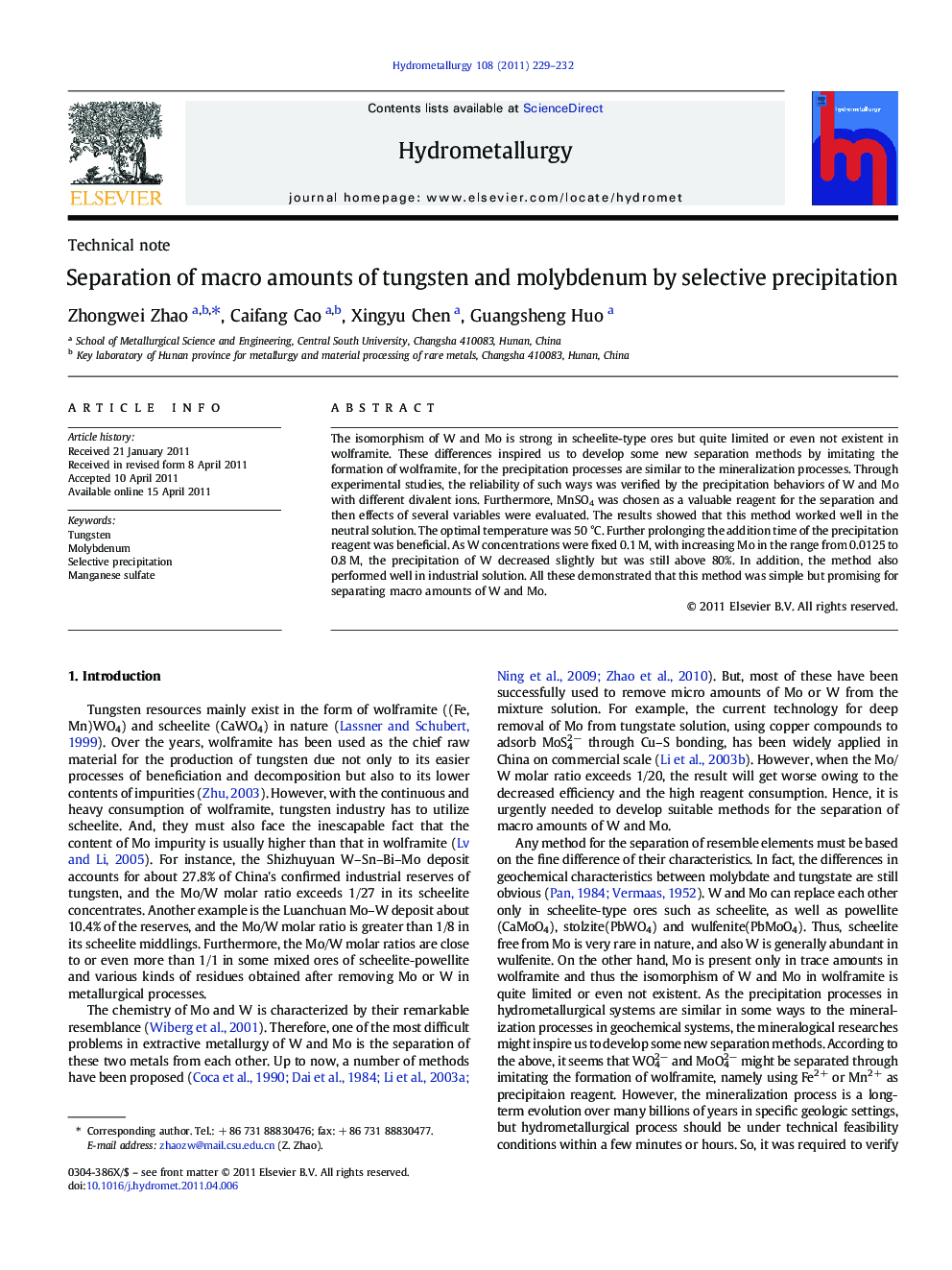| Article ID | Journal | Published Year | Pages | File Type |
|---|---|---|---|---|
| 212670 | Hydrometallurgy | 2011 | 4 Pages |
The isomorphism of W and Mo is strong in scheelite-type ores but quite limited or even not existent in wolframite. These differences inspired us to develop some new separation methods by imitating the formation of wolframite, for the precipitation processes are similar to the mineralization processes. Through experimental studies, the reliability of such ways was verified by the precipitation behaviors of W and Mo with different divalent ions. Furthermore, MnSO4 was chosen as a valuable reagent for the separation and then effects of several variables were evaluated. The results showed that this method worked well in the neutral solution. The optimal temperature was 50 °C. Further prolonging the addition time of the precipitation reagent was beneficial. As W concentrations were fixed 0.1 M, with increasing Mo in the range from 0.0125 to 0.8 M, the precipitation of W decreased slightly but was still above 80%. In addition, the method also performed well in industrial solution. All these demonstrated that this method was simple but promising for separating macro amounts of W and Mo.
Research Highlights► A conception was proposed that the separation of W and Mo might be carried out by imitating the formation of wolframite. ► The reliability of the conception was verified by the precipitation behaviors of W and Mo with different ions. ► MnSO4 was chosen as a valuable separation reagent and the effects of several variables were evaluated. ► When Mo/W molar ratio was 1/1, the highest separation factor exceeded 600.
